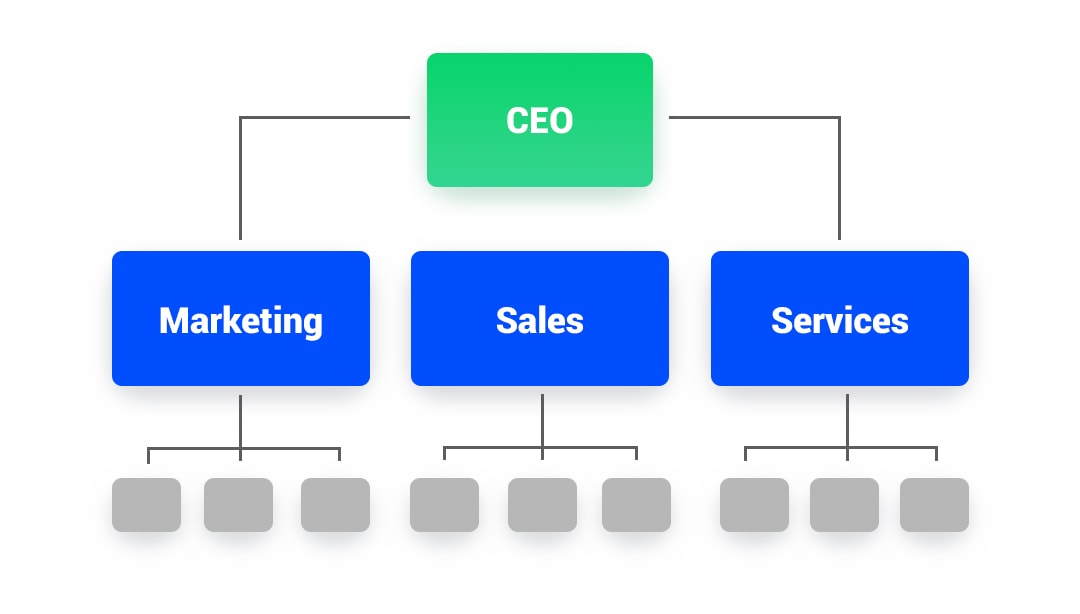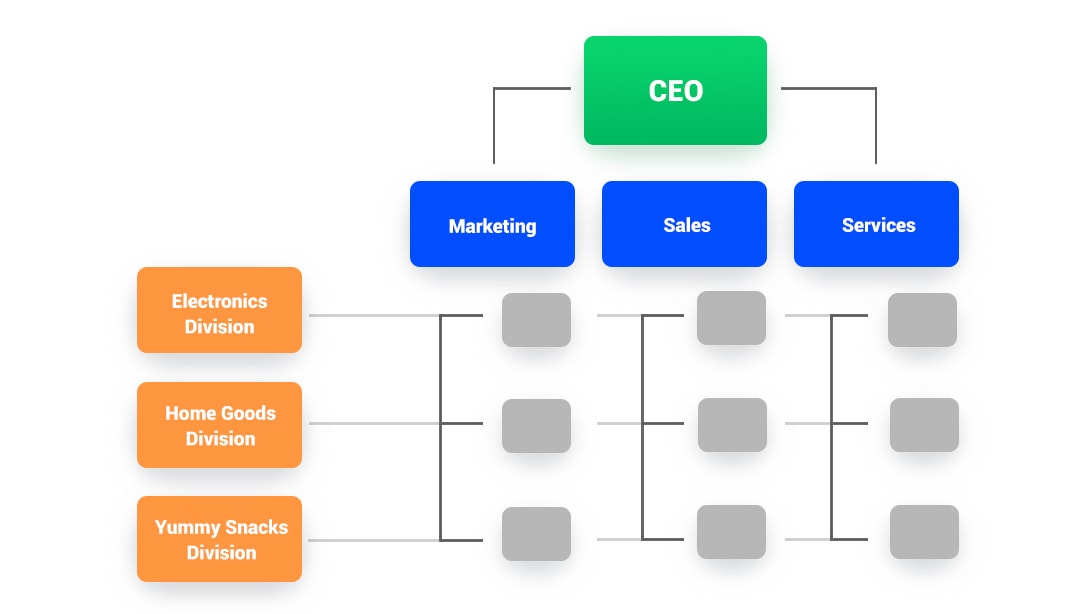
Using a systematic, disciplined approach is very important: it allows people to be good leaders and effective managers. One of the areas where it is especially valuable is in business and marketing. There are many people and resources that must be managed quickly and efficiently, so having a proper marketing company organizational structure is a must. So, if you don’t know how to structure a marketing system, this article will provide you with all the basics you need to know.
Content:
- Why Do You Need A Marketing Organization Structure?
- The Most Common Types Of Marketing Structure
- Conclusion
Why Do You Need A Marketing Organization Structure?
To be fair, every organization has some kind of structure. According to the marketing structure definition, it simply refers to how the parts of a system are arranged and interact with each other. However, you should always ask yourself the following question: “Is the marketing structure of my organization as efficient as possible?”. If the answer is yes, you will have a lot of benefits, including:
- Clear and fair division of work, with everything done by specialists;
- Simple and clear communication between employees;
- Coherent and more accessible goals, which leads to better efficiency.
The Most Common Types Of Marketing Structure
There are many different ways of assessing a marketing organization structures. Furthermore, most of the marketing structure charts you might read about are model cases, but in the real world, everything is much more complex. However, it’s a great way to learn about the general principles of creating a marketing organization and to figure out which model is most applicable to your business. So, here are some of the most prominent marketing organization structure examples.
1. Linear structure

A linear structure is one of the simplest organization structures, yet one of the most flawed as well. This model is based on a straightforward military chain of command where the top member is responsible for the whole operation and each chain responds only to its immediate predecessor.
It works fairly well for small businesses, and it is quite easy to implement, but it has proven to be unreliable and uncompromising for even moderately large businesses. Unless you want to be a tyrant in charge of an army, you’d better come up with something better than this.
2. Functional structure

The next simplest (and probably most common) modern marketing organizational structure is the function-based structure. As you might notice from its name, in this model the employees are organized into divisions based on the functions they perform.
What’s great about this type of structure is that it is easy to manage on a bigger scale. Furthermore, it is much easier to adapt to new conditions as your business continues to grow. Another advantage is that every division can be highly specialized and fairly autonomous. However, here lies a problem with this system – there can be difficulties and limitations in communication between divisions.
3. Product-based structure

This model draws its inspiration from the previous one, but it is specifically developed for businesses that sell more than one product. It divides the staff based on the product they are working with. This way, every division has members of every functional specialty.
In this model, every division becomes almost completely independent. There is no need for communication between departments in this case. On the other hand, it is a bit more difficult to manage, and distributing resources can become a much harder task.
4. Matrix structure

If you take a look at this marketing organization chart, you can see that this structure basically combines the previous two. The departments are defined according to both employee function and product. Usually one of the dividing criteria is less important, in this case, the product division.
This type of double reporting is much easier to manage as you deal with much more information at a much greater rate. However, it might become quite difficult for your employees to follow. Such a disorientation can lead to problems in communication and too much bureaucracy.
5. Geographical structure
This structure was created for big international companies, so it basically works only for them. However, it’s important to take a look at such a structure as it is the first model mentioned here that takes into account factors outside of the company as well as internal factors. It is easy to forget that an organization should not only adapt to the strengths and weaknesses of each team member but also pay attention to the world around it.
The problem with this model is basically the same as for the product-based structure: every division becomes almost completely independent and it becomes harder to manage and monitor the decisions they make. Resource distribution remains a problem too. However, now you can rely on the statistics you can gather from your customers. The more clients there are in a certain region, the more resources the corresponding division needs.
6. Channel-based structure
The main external factor influencing the marketing structure is its customers. Although you can’t definitively predict each and every move your customers make, you can make some simplified predictions.
An easier solution is to divide your clients into groups and distribute your goods through different channels based on the preferences of each group. For example, you can contact your loyal returning customers directly, if they have given you their mail address, but you can’t catch the attention of new customers this way. For them, you need another channel, such as your own website.
The difference between these channels has become increasingly bigger over the years. That’s why the smart decision would be to divide your staff into departments based on different channels. The only problem with this decision is that it would be much harder to offer the same fair treatment to your customers no matter what channel they use. It is manageable, but it definitely requires some extra effort.
7. Segment-based structure
This model is similar to the previous one, but it is based on a more deep and thoughtful analysis of your customers. If you know your target group well, you can implement more effective and efficient division into different segments.
For example, if your product has multiple uses, you can divide your user base into groups based on the way they will mostly use it. Other criteria you may use include the industry they work in, the position they hold, or even their age.
If you create the departments to look after each segment of your customers, you will be able to tailor the customer experience just for them – everyone loves the personal approac
Conclusion
All in all, don’t forget that everything mentioned above often does not correlate with real life. Firstly, sometimes it is more efficient to combine a couple of different models and structure an organization, for example, both geographically and based on a product. Secondly, there might be a situation where it’s better not to create an elaborate structure. Finally, there are certain types of marketing structure organizations that are much more detailed and take into account a lot of relatively minor factors. Implementing such innovative designs can be risky, but sometimes it pays off very well.
However, now you know the basics of marketing structure. With this knowledge, you can start your own journey. Tailor your own organization chart according to your business specifics and needs. If you need some help, talk to marketing specialists and try out your organizational structure in practice. So, if you want to boost your sales and make a marketing organizational chart that suits your business the best, start right now and don’t be afraid to make mistakes.